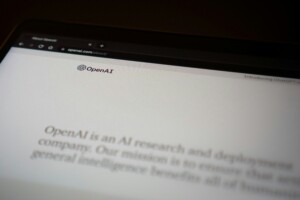Huawei Technologies is preparing to test its most advanced artificial intelligence chip, the Ascend 910D, aiming to directly challenge Nvidia’s dominance in AI hardware, the Wall Street Journal.
Huawei has begun approaching Chinese tech companies for early testing of the Ascend 910D’s capabilities. First batches of the chip are expected to ship by late May.
Insiders say Huawei believes the 910D could outperform Nvidia’s powerful H100 chip, which was previously the go-to hardware for AI training in China.
This is a major milestone in China’s push for tech self-sufficiency
- The U.S. banned sales of Nvidia’s H100 and newer AI chips to China in 2022, tightening restrictions on China’s access to cutting-edge tech.
- Huawei’s development shows that U.S. sanctions, while painful, have not stopped China’s semiconductor ambitions.
- If Huawei’s 910D succeeds, it could give Chinese AI companies a domestic alternative to American technology — a strategic breakthrough.
 Photo by BoliviaInteligente on Unsplash
Photo by BoliviaInteligente on Unsplash
Huawei’s AI Push
Earlier Huawei Ascend chips (910B and 910C) made headlines but ultimately lagged behind Nvidia’s top-tier products.
However, Huawei has been scaling up rapidly, building powerful AI clusters like CloudMatrix 384, designed to compete against Nvidia’s newest server tech.
Despite facing global supply chain constraints and being cut off from the latest manufacturing technologies, Huawei has used creative engineering — like relying on older HBM2 memory — to keep advancing.
Industry impact
- Nvidia remains a leader globally, but its grip on the Chinese market is weakening.
- Huawei’s new AI chip could ignite a new wave of domestic AI innovation inside China, further insulating its tech industry from U.S. pressure.
- Analysts warn that if Huawei delivers a true H100 rival, the global semiconductor landscape could tilt sharply over the next few years.
Huawei is no longer just playing catch-up.
If the Ascend 910D lives up to the hype, it could rewrite the balance of power in the global AI chip race — and make China less dependent on Silicon Valley’s biggest names.
The post The End of Nvidia’s Dominance? Huawei’s New AI Chip Could Be a Game-Changer appeared first on DailyAI.
 Photo by
Photo by 

